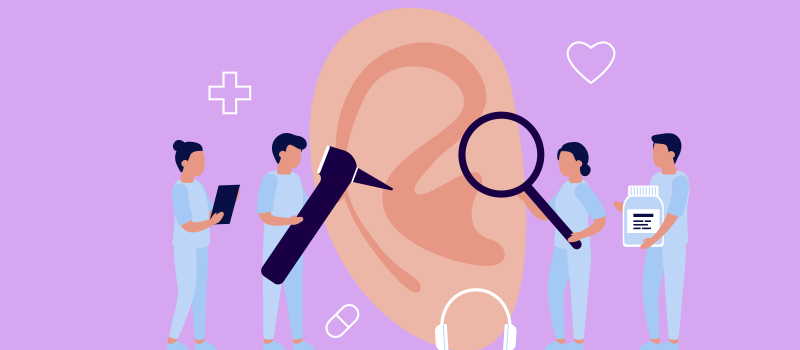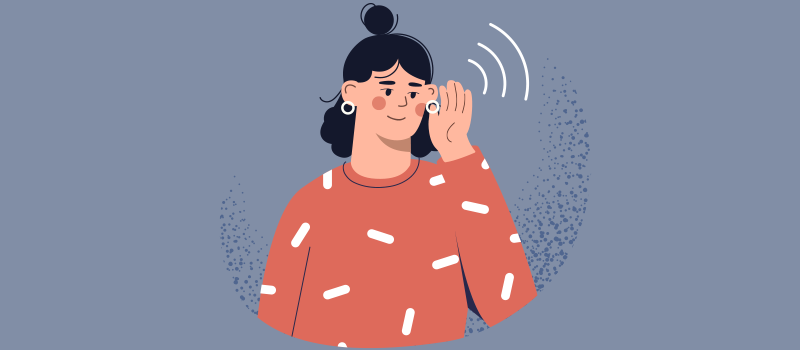What’s the Buzz
The Bee Healthy Blog
Meniere’s Disease Treatment Exercises

Vertigo is a sensation of spinning or whirling – either of yourself or of surrounding things. People who have conditions such as Meniere’s disease or benign paroxysmal positional vertigo (BPPV) can experience vertigo throughout life. Vertigo can put such people at risk of falling and injuring themselves. It can also place limitations on activities and affect the overall quality of life.
If you suffer from Meniere’s disease, there are certain balance exercises you can do at home to cope with the confusing signals that cause the spinning.
Please continue reading to learn more about some of the exercises that can help with vertigo associated with Meniere’s disease.
What is benign paroxysmal positional vertigo?
Benign paroxysmal positional vertigo (BPPV) is a common cause of vertigo and dizziness. It is triggered by changes in head position, such as tipping your head forward, turning over in bed, or going from a lying down to sitting position. BPPV can be bothersome, but is rarely serious. However, when severe, it can increase the risk of falls and injuries.
What is Meniere’s disease?
Meniere's disease is an inner ear disorder that typically affects either the right ear or the left ear. It causes chronic vertigo (dizzy spells) and hearing loss. The exact cause of Meniere’s is unknown, but it is believed to be due to abnormal fluid levels in the inner ear. Several treatments, including lifestyle changes, balance exercises, medications, and surgery, can help relieve Meniere’s disease symptoms.
How can I fix Meniere's disease naturally?
There are certain lifestyle changes, home remedies, and self-care strategies that can reduce the impact of Meniere's disease on your daily activities and help you cope with the condition. These include:
Sit Down or Lie Down During Attacks
When you feel dizzy during an episode of vertigo, it helps to sit down or lie down. You should also avoid doing things that make your symptoms worse, such as sudden movements, reading, watching television, or looking at bright lights. Focusing on an object that is not moving can help.
Rest During and After an Episode
It’s important not to rush back to your daily routine after an attack. Give yourself time to recover from a spinning episode.
Take Precautions to Avoid Falling
Vertigo can cause you to lose your balance and fall, causing serious injuries. Take some precautions such as ensuring good lighting to use the bathroom at night. Make sure you don’t have to maneuver around too many objects. Use a cane for stability if needed. Take your time getting out of bed and avoid sudden movements.
Limit Salt Intake
A high-salt diet can lead to fluid retention. You should aim to consume less than 2,300 mg of sodium (salt) a day, spread throughout the day. This is not only good for your Meniere’s symptoms but also for overall health.
Limit Caffeine, Tobacco, and Alcohol
Caffeine, alcohol, and tobacco can interfere with the regulation of fluid levels in the body and can make symptoms such as dizziness and headaches worse.
How do you make Meniere's go away?
Medications for Meniere’s Disease
Doctors can prescribe several types of medications to reduce the severity of Meniere’s attacks, including medicines used to treat motion sickness, nausea, and vomiting, such as meclizine (Antivert), promethazine (Phenergan), and diazepam (Valium). Some people benefit from a combination of limited salt intake and diuretic medication (water pills) to reduce the severity and frequency of vertigo episodes.
Non-Invasive Treatments for Meniere’s Disease
Vestibular rehabilitation therapy is an exercise-based program that can help improve balance and reduce the problems related to vertigo.
A medical device called a Meniett pulse generator may be recommended for severe vertigo. This device generates pressure in the middle ear to reduce fluid buildup. You can do the positive pressure therapy at home several times a day to get relief from tinnitus (ringing in the ears) and vertigo.
If you have trouble hearing due to Meniere’s, your doctor may recommend a hearing aid.
Injection Treatment for Meniere’s Disease
Doctors sometimes inject medications into the middle ear to improve vertigo symptoms. This can include the injection of an antibiotic, gentamicin, which is toxic and causes the inner ear to stop functioning for balance. However, the treatment carries a risk of causing further hearing loss. Steroid injections may be performed. While steroids are typically less effective than gentamicin, they carry a lower risk of causing hearing loss.
Surgical Treatments for Meniere’s
Different types of surgical procedures can be done in people with severe vertigo attacks due to Meniere's disease. These include decompression of the endolymphatic sac in the inner ear that controls fluid levels, labyrinthectomy to remove the inner ear balance and hearing mechanism (offered to people who already have almost complete hearing loss), canalith repositioning procedure, and vestibular nerve sectioning (cutting the inner ear nerve).
Is exercise good for Meniere's disease?
Exercises for Meniere’s disease can help improve balance and vertigo symptoms within a few days to weeks. These exercises consist of beginner (level 1) exercises as well as more advanced (level 2) exercises that are slightly harder to do. It’s important to start slowly and build up gradually in duration and repetitions. You should have someone with you when you first start doing Meniere’s disease exercises. Over the next few months, you might be able to do them on your own without supervision.
What are some good inner ear balance exercises?
Level 1 Exercises
The standing exercises should be done with a wall behind you and a chair in front of you for support.
Home Epley Maneuver: Sit on the edge of your bed with a pillow that will fall under your shoulders when you lie down. Turn your head by 45 degrees to the right or left depending on which side causes dizziness. Quickly lie down, placing your head on the bed, keeping your head still turned to one side. Hold the position for 30 seconds or until dizziness stops. Turn your head by 90 degrees while keeping it on the bed. Wait another 30 seconds and turn your head and body fully to the side. Wait another 30 seconds before slowly sitting up. Remain seated on the bed for a few minutes until the vertigo stops.
Romberg Exercise: Stand upright with your feet together and your arms by your side for 30 seconds. Do this twice a day. Progress to doing the exercise with eyes closed.
Standing Sway Exercises: These balance exercises consist of front-to-back and right-to-left swaying. Keep your feet shoulder-width apart and your arms by your side. Gently lean forward and backward, shifting your weight to your toes and heels alternately, making sure your toes and heels stay firmly on the ground. Your shoulders and hips should move together and you should not bend at the hips. Slowly increase the degree of sway without taking a step. This is the front-to-back sway. For the right-to-left sway exercise, gently lean to the left and right side alternately, shifting your weight to your left and right foot. Begin by doing these standing sway exercises 20 times a day and progress to 30 times a day.
Marching in Place: Stand in a neutral position with your arms by your side. Lift each knee alternately towards the ceiling. Do this exercise twice a day, 20 times each time. Progress to 30 times and then try marching in place with your eyes closed to develop balance.
Level 2 Exercises
Turning in Place: Stand in a neutral position with your arms by your side. Turn by 180 degrees (half a circle). Stop for 10 seconds or until dizziness fades. Repeat 5 times turning to the right side. Then do it on the left side. Do the exercise twice a day. If you find one side makes your dizzier, do it more often on that side. You should progress gradually to turning a full circle with your eyes closed.
Standing Head Movements: Stand with your feet together and your arms by your side. Move your head up and down (looking at the ceiling and the floor) 10 times.
Start-Stop Walking Exercise: Take 5 steps forward, stop abruptly, and wait for 10 seconds or until dizziness fades. Then continue walking another 5 steps until you have walked around 50 feet.
Wrapping Up
Many people benefit from balance exercises for vertigo associated with Meniere’s. However, the effectiveness of these exercises can vary from person to person. Always consult a healthcare provider before starting any exercises.
References:








SOCIAL